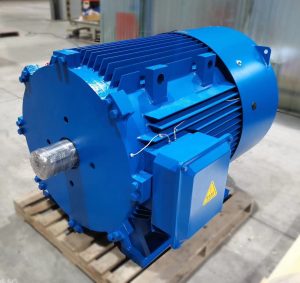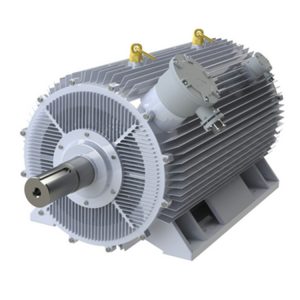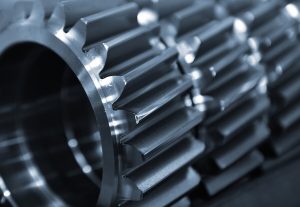Magnetic motors (also known as magnet motors or PMSMs) are gaining popularity, in various industries because of their efficiency and performance benefits along with their low maintenance needs. They are commonly used in fields like robotics, automation, electric vehicles, and renewable energy systems. However similar to any technology PMSMs have their advantages and disadvantages such, as dealing with demagnetization challenges. This article examines the advantages and disadvantages of motors while also discussing the reasons, behind demagnetization and suggesting solutions to avoid issues, in the future.

PMSMs stand out for their ability to reduce losses compared to induction motors, which rely on current flow to generate a magnetic field and incur copper losses as a result. The use of magnets in PMSMs eliminates these losses by creating a magnetic field without the need for current in the rotor. This unique feature keeps the temperature rise below 20 degrees Kelvin during load, improving durability, longevity, and energy efficiency.
Efficiency plays a significant role in PMSMs, especially under light load conditions, where they excel with performance levels exceeding 90%. Studies indicate that PMSMs can maintain efficiency ranging from 25% to 120% of their rated capacity due to their ability to deliver results even when not running at full capacity—a scenario often encountered in practical usage settings. Furthermore, these motors are commonly constructed with the capacity to handle varying environmental conditions, even if such scenarios are infrequent. For instance, fans and pumps often operate below 70% of their full power capacity to ensure efficiency and optimal performance consistently. Unlike other motors that experience decreased efficiency under loads, PMSMs maintain high efficiency levels even at lower power outputs, resulting in notable energy conservation and cost-effectiveness in the long run.
High Starting Torque: PMSMs provide substantial starting torque, which is beneficial for applications requiring rapid acceleration.
Short Starting Time: The design of PMSMs allows for quick start-up times, enhancing overall productivity in manufacturing and automation processes.
High Overload Capacity: These motors can handle short periods of overload without compromising performance, making them suitable for applications with variable loads.
Ease of Control: PMSMs are easy to control and can maintain constant speed regardless of load fluctuations or voltage variations, depending solely on frequency. This leads to smoother and more reliable operation.
Dynamic Response: The strict synchronization of speed in PMSMs results in excellent dynamic response performance, making them ideal for applications requiring precise control.
Standardized Dimensions: PMSMs adhere to IEC standards for installation dimensions, allowing for straightforward replacement of traditional three-phase asynchronous motors without the need for significant redesign.
Protection Ratings: Many PMSMs come with protection ratings of IP54 or IP55, ensuring durability and reliability in challenging operating environments.
Enneng is known for its notch magnet synchronous motor solutions designed to suit a range of applications, such as industrial automation technology and home appliances, as well as powering new energy vehicles efficiently and reliably. The company uses high-quality materials and cutting-edge control techniques to ensure optimal performance, even under varying load conditions, making them a preferred choice for energy-conscious customers. Moreover, Enneng’s dedication to innovation enables them to consistently improve their range of products to meet the changing demands of the market.

While there are benefits to using PMSMs, it is important to take into account some drawbacks as well.
Manufacturing magnets involves using materials such as rare earth elements like neodymium and dysprosium, which can drive up the prices of PMSMs and render them less feasible for specific applications in industries where expenses are a concern. Furthermore, the fluctuating costs of these materials can impact pricing for both manufacturers and consumers.
Permanent magnet synchronous motors (PMSMs) lose their magnetism when exposed to extreme environments or situations, such as high temperatures, excessive vibration, or overload current, which can cause irreversible damage to the magnets. Preventing this magnetic loss and ensuring long-term motor operation requires careful design planning that considers these factors and keeps the motor within proper operating limits. Understanding the conditions under which the motor is used is essential to ensuring that the PMSM has a long service life and maintains reliable performance.
The smooth functioning of PMSMs depends greatly on control systems, unlike induction motors, which rely on more basic electronic controllers for effective management of operations. This increased complexity may result in higher expenses and potential difficulties with maintenance. Additionally, the requirement for expertise and training to handle and maintain these systems could present obstacles for users.
Understanding the elements that lead to the demagnetization of magnet motors is crucial for creating and operating them efficiently and effectively. It is important to consider factors such as…
Choosing the correct types of steel is crucial for the efficiency of PMSMs. Errors in calculations during the design process can lead to selecting a grade of steel that is inadequate, causing issues later on during operation. For example, when a magnet intended for temperatures up to 180°C is mistakenly replaced with one only rated for 155°C in a motor design process, initial tests might seem fine at a glance. However, over time, the motor stabilizes thermally and operates consistently at higher temperatures. Its performance could decline gradually, resulting in situations where excessive current flows through the system and eventually causes demagnetization issues.
Excessive heat can impact the characteristics of PMSMs. Several factors may lead to overheating:
Inadequate Ventilation: Poor circulation and ventilation within the motor can cause localized heat buildup, leading to overheating and subsequent demagnetization of the magnets.
Excessive Heat Load: If the heat generated by the windings exceeds the heat exchange capacity of the motor’s cooling system, it can lead to irreversible loss of magnetism. Effective thermal management is therefore crucial to maintaining motor performance.
When in use, if the current load surpasses the magnet’s capacity to resist demagnetization, it can cause a permanent loss of magnetism. This situation may lead to a further rise in load current, ultimately resulting in a loss of magnetism.
Ensuring that PMSMs operate effectively hinges upon preventing demagnetization, which is a crucial element for maintenance.
Selecting the appropriate power rating for magnet motors is vital to effectively avoid or postpone demagnetization issues. Factors such as temperature and excessive loads contribute to demagnetization problems, highlighting the importance of a thoughtful power selection process. It is recommended to have some power capacity—about 20% additional—to adjust for variations in load conditions and ensure that the motors operate at optimal temperatures.
To reduce the chances of demagnetization occurring in the motor system, it is important to avoid frequent starts with heavy loads. The act of starting can lead to fluctuations in torque that might result in demagnetization of the poles in the rotor. Using soft-start techniques or gradually ramping up the load can be effective strategies to minimize these potential issues.
Increase the Thickness of Permanent Magnets:
When designing a product or system, it is essential to consider how armature reaction interacts with torque and how magnet demagnetization plays a role. Adding thickness to the magnets can help them resist demagnetization better, especially in situations where high torque is involved. By implementing this change in design, you can ensure that the magnets are strong enough to handle the field produced by the winding currents and radial forces.
Integrate Ventilation Channels Within the Rotor:
Maintaining control is crucial in avoiding demagnetization risks for motor components. To enhance cooling efficiency and lower the temperature of steel parts, it is beneficial to incorporate ventilation pathways within the rotor design. The improved airflow and heat dispersion resulting from this feature not only aid in sustaining operational temperatures but also boost the overall effectiveness of the motor system.

Permanent magnet synchronous motors are an excellent option for use due to their several benefits, such as minimal losses, high efficiency, and easy control capabilities. However, there are certain obstacles, such as the high cost of materials and susceptibility to losing their magnetic properties, that require careful attention in both the design and operation phases. To ensure the optimal functioning and durability of PMSMs, it is essential to comprehend the causes of demagnetization and apply suitable protective strategies. As industries continue to seek energy-efficient solutions, the significance of PMSMs, especially those sourced from pioneering companies like Enneng, is poised to increase dramatically.